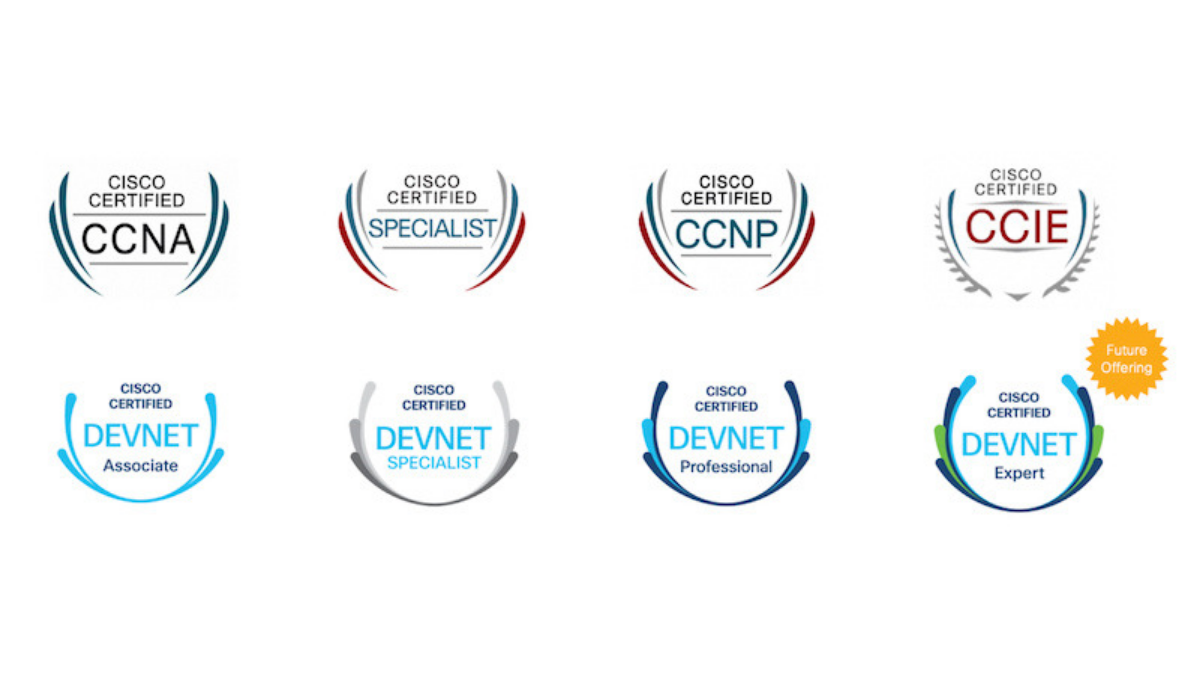(5 days)
Version 2.5
Special Note to New Hampshire Residents
This course has not yet been approved by the New Hampshire Department of Education. Please contact us for an update on when the class will be available in New Hampshire.
Overview
Implementing Cisco Quality of Service (QOS) v2.5 provides learners with in-depth knowledge of QoS requirements, conceptual models such as best effort, IntServ, and DiffServ, and the implementation of QoS on Cisco platforms. The curriculum covers the theory of QoS, design issues, and configuration of various QoS mechanisms to facilitate the creation of effective administrative policies providing QoS.
Case studies and lab exercises included in the course help learners to apply the concepts from the individual modules to real-life scenarios. The course also gives learners design and usage rule for advanced QoS features. This gives the learners the opportunity to design and implement efficient, optimal, and trouble-free multiservice networks.
To participate in the hands-on labs in this class, you need to bring a laptop computer with the following:
Windows 7 or 8.1 or 10 is recommended. Mac OSX 10.6 or greater is supported as well.
Intel Celeron or better processors are preferred.
1 GB or more of RAM
Browser Requirements: Internet Explorer 10 or greater or Mozilla Firefox. (Safari and Mozilla Firefox for Mac OSX)
All students are required to have administrator rights to their PCs and cannot be logged in to a domain using any Group Policies that will limit their machine’s capabilities.
If you do not have administrator rights to your PC, you at least need permissions to download, install, and run Cisco Any Connect Client.
If you are participating in a WebEx event, it is highly recommended to take this class at a location that has bandwidth speeds at a minimum of 1 Mbps bandwidth speeds.
Note: Students registering for this course will be receiving their course kit in a digital format. To be able to view your digital kit you will need to bring a laptop PC and/or a compatible iPad or Android tablet. The recommended system requirements and instructions to access the course kit content can be found at the following link: Digital Course Kit Requirements and Instructions
Please be aware that this digital version is designed for online use, not for printing. You can print up to 10 pages only in each guide within a course. Please note that every time you click the Print button in the book, this counts as one page printed, whether or not you click OK in the Print dialog.
Objectives
Upon completing this course, the learner will be able to meet these overall objectives:
You will be able to identify, describe, and correctly implement the appropriate QoS mechanisms required to create an effective administrative policy providing QoS
Prerequisites
The knowledge and skills that a learner must have before attending this course are as follows:
Interconnecting Cisco Networking Devices, Part 1 and 2 (ICND1 and ICND2)
Cisco Certified Networking Associate
Who Should Attend
The primary audience for this course is as follows:
Pre- and post-sales technical engineers responsible for designing, implementing, or troubleshooting networks
Network architects responsible for designing multiservice networks to carry voice, video, and data traffic in enterprise or service provider environments
Advanced Unified Communications Specialization
Master UC Specialization
Master Telepresence ATP
The secondary audience for this course is as follows:
CCIE R&S Candidates
What’s included?
- Authorized Courseware
- Intensive Hands on Skills Development with an Experienced Subject Matter Expert
- Hands on practice on real Servers and extended lab support 1.800.482.3172
- Examination Vouchers & Onsite Certification Testing- (excluding Adobe and PMP Boot Camps)
- Academy Code of Honor: Test Pass Guarantee
- Optional: Package for Hotel Accommodations, Lunch and Transportation
With several convenient training delivery methods offered, The Academy makes getting the training you need easy. Whether you prefer to learn in a classroom or an online live learning virtual environment, training videos hosted online, and private group classes hosted at your site. We offer expert instruction to individuals, government agencies, non-profits, and corporations. Our live classes, on-sites, and online training videos all feature certified instructors who teach a detailed curriculum and share their expertise and insights with trainees. No matter how you prefer to receive the training, you can count on The Academy for an engaging and effective learning experience.
- Instructor Led (the best training format we offer)
- Live Online Classroom – Online Instructor Led
- Self-Paced Video
Speak to an Admissions Representative for complete details
| Start | Finish | Public Price | Public Enroll | Private Price | Private Enroll |
|---|---|---|---|---|---|
| 5/12/2025 | 5/16/2025 | ||||
| 6/2/2025 | 6/6/2025 | ||||
| 6/23/2025 | 6/27/2025 | ||||
| 7/14/2025 | 7/18/2025 | ||||
| 8/4/2025 | 8/8/2025 | ||||
| 8/25/2025 | 8/29/2025 | ||||
| 9/15/2025 | 9/19/2025 | ||||
| 10/6/2025 | 10/10/2025 | ||||
| 10/27/2025 | 10/31/2025 | ||||
| 11/17/2025 | 11/21/2025 | ||||
| 12/8/2025 | 12/12/2025 | ||||
| 12/29/2025 | 1/2/2026 |
Course Outline
Module 1: Introduction to QoS
Lesson 1: Review Converged Networks
Converged Networks
Quality Issues in Converged Networks
Available Bandwidth
Components of Network Delay
Calculating End-to-End Delay
Jitter
Packet Loss
Summary
Lesson 2: Understand QoS
QoS Defined
QoS Policy Defined
Implement a QoS Policy
Identify Network Traffic
Voice Traffic Profile
Videoconferencing Traffic Profile
Cisco TelePresence Traffic Profile
Data Traffic Profile
Divide Network Traffic into Classes
Define Policies for Traffic Classes
QoS Mechanisms
QoS Implementation Methods
QoS Monitoring Methods
Cisco Medianet QoS Design
Summary
Case Study 1-1: QoS Mechanisms
Task 1: Apply QoS Mechanisms
Lesson 3: Describe Best-Effort and Integrated Services Models
QoS Models
Best-Effort QoS Model
IntServ Model
Resource Reservation Protocol
RSVP Components
RSVP Interface Bandwidth Queuing
Summary
Lesson 4: Describe the Differentiated Services Model
DiffServ Model
DiffServ Terminology
DSCP Encoding
Per-Hop Behaviors
Expedited Forwarding
Assured Forwarding
AF Drop Probability
Class Selector
Integration of IntServ and DiffServ
Summary
Lesson 5: Module Summary
References
Lesson 6: Module Self-Check
Module 2: Implement and Monitor QoS
Lesson 1: MQC Introduction
Modular QoS CLI
MQC Components
Example: MQC Policy Configuration
Class Maps Overview
Match Operation in Class Maps
Policy Maps Overview
Service Policy Overview
Hierarchical Policy
Summary
Lesson 2: Monitor QoS
SNMP Management of QoS
Describe Class-Based QoS MIB
Cisco NBAR
Cisco NBAR Protocol Discovery
Cisco NBAR Protocol Discovery MIB
NetFlow
Cisco Flexible NetFlow
Cisco Flexible NetFlow Integration with NBAR
Class-Based Flexible NetFlow
Cisco Performance Monitor
Cisco Mediatrace
Cisco IP SLA
IP SLA: UDP Jitter
Summary
Lab 2-1: IP SLA Setup and QoS Baseline Measurement
Task 1: Verify Network Connectivity
Task 2: Create a Baseline Measurement of Network Traffic
Task 3: Measure the Network Performance Under Traffic Load
Task 4: QoS Measurement Lab Results
Lesson 3: Define Campus AutoQoS
AutoQoS
AutoQoS Macros
Trust Boundaries
Campus AutoQoS Trust
Campus AutoQoS Conditional Trust
Campus AutoQoS Video
Campus AutoQoS VoIP
Campus AutoQoS Classify
Monitoring AutoQoS in the Campus
Summary
Lesson 4: Define WAN AutoQoS
Cisco AutoQoS for Routers
WAN AutoQoS VoIP
AutoQoS for the Enterprise Overview
Configuring AutoQoS for the Enterprise
Monitoring AutoQoS in the WAN
Summary
Lab 2-2: Configuring QoS with Cisco AutoQoS
Task 1: Configure Cisco AutoQoS Classify on the Catalyst 2960-S Switch
Task 2: Configure Cisco AutoQoS for the Enterprise on Cisco IOS Routers
Task 3: Measure Network Performance with Cisco AutoQoS for the Enterprise
Task 4: QoS Measurement Results
Lesson 5: Module Summary
References
Lesson 6: Module Self-Check
Module 3: Classification and Marking
Lesson 1: Classification and Marking Overview
Classification
Marking
Classification and Marking at the Data Link Layer
Classification and Marking at the Network Layer
Mapping QoS Marking Between OSI Layers
QoS Service Class Defined
Service Class Templates
RFC 4594 Marking Recommendations
Summary
Case Study 3-1: Classification and Marking
Task 1: Classification and Marking
Task 2: Identify Network Locations Where Classification and Marking Should Be Applied
Lesson 2: MQC for Classification and Marking
MQC Classification Options
Configuring Class Maps
Monitoring Classification
MQC Marking Options
Configuring Class-Based Marking
Monitoring Class-Based Marking
Configuring IPV6 Classification and Marking
Summary
Lab 3-2: Classification and Marking Using MQC
Task 1: Configure an IP Extended Access List
Task 2: Configure MQC Classification
Task 3: Configure Class-Based Marking
Lesson 3: NBAR for Classification
Cisco NBAR
NBAR Application Support
Configuring NBAR With MQC
Classifying HTTP Traffic
NBAR2 Application Grouping
NBAR Port Map
NBAR Custom Protocols
Configuring Custom Protocols
NBAR Worm Policing
NBAR versus Future Worms
Summary
Lab 3-3: Using NBAR for Classification
Task 1: Upgrade the NBAR Protocol Pack
Task 2: Discover Applications and Traffic by Using NBAR
Task 3: Configure Classification with NBAR
Lesson 4: Use of QoS Preclassify
Issues with QoS on VPNs
ToS Byte Preservation
QoS Preclassify Operation
Configuring QoS Preclassify
Monitoring QoS Preclassify
Summary
Lab 3-4: Configuring QoS Preclassify
Task 1: Configure a GRE Tunnel
Task 2: Configure QoS Preclassify
Lesson 5: Campus Classification and Marking
Campus Classification and Marking
Overview of QoS Trust Boundaries
Campus Ingress QoS Models
QoS Map Tables: Marking
Internal DSCP
Applying Campus Switch Classification and Marking
Monitoring Campus Classification and Marking
Summary
Lab 3-5: Campus Classification and Marking Using MQC
Task 1: Configure a Trust Boundary
Task 2: Configure CoS-to-DSCP Mapping
Task 3: Configure Class-Based Marking
Task 4: Verify QoS Markings
Task 5: Adjust Router Classification and Marking Policy
Lesson 6: Module Summary
References
Lesson 7: Module Self-Check
Module 4: Congestion Management
Lesson 1: Queuing Introduction
Congestion and Queuing
Queuing Components
Hardware Queue Size
Congestion on Logical Interfaces
Queuing Algorithms
FIFO Queuing
Priority Queuing
Round-Robin Queuing
WRR Queuing
DRR Queuing
Summary
Lesson 2: Configure WFQ
Weighted Fair Queuing
WFQ Classification
WFQ Scheduling
WFQ Drop Operation
Benefits and Drawbacks of WFQ
Configuring WFQ
Monitoring WFQ
Summary
Lab 4-1: Configuring Fair Queuing
Task 1: Configure Fair Queuing
Task 2: Measure Network Performance with Fair Queuing
Task 3: Adjust the Fair Queuing Configuration
Task 4: Measure Network Performance with Fair Queuing Configured with 256 Dynamic Queues
Task 5: QoS Measurement Lab Results
Lesson 3: Configure CBWFQ and LLQ
Class-Based Weighted Fair Queuing
CBWFQ Architecture
Benefits and Drawbacks of CBWFQ
Configuring CBWFQ
Low Latency Queuing
LLQ Architecture
Configuring LLQ
Monitoring LLQ-CBWFQ
Summary
Lab 4-2: Configuring LLQ-CBWFQ
Task 1: Configure a CBWFQ Policy with LLQ
Task 2: Apply and Monitor CBWFQ with LLQ Operation
Task 3: Measure Network Performance with CBWFQ
Task 4: QoS Measurement Lab Results
Lesson 4: Configure Campus Congestion Management
Campus Queuing
Catalyst Switch Hardware Queue Nomenclature
Queue Mapping
WRR on Campus Switches
WRR Bandwidth and Buffer Settings
SRR on Campus Switches
SRR Common and Reserved Buffers
Configuring Ingress Queuing on Cisco Catalyst 3750 Series Switches
Configuring Egress Queuing on Cisco Catalyst 3750 Series Switches
Monitoring Congestion Management On Cisco Catalyst 3750 Series Switches
Summary
Lab 4-3: Configuring Campus-Based Queuing Mechanisms
Task 1: Review Egress Queuing Defaults
Task 2: Configure Global Egress Queuing Parameters
Task 3: Configure and Monitor Egress Queuing
Lesson 5: Module Summary
References
Lesson 6: Module Self-Check
Module 5: Congestion Avoidance
Lesson 1: Congestion Avoidance Introduction
TCP Behavior
Congestion and TCP
Example: TCP Congestion Control Algorithms
Managing Congestion with Tail Drop
Impact of Tail Drop
Random Early Detection
RED Profiles and Modes
TCP Behavior Before and After RED
Summary
Lesson 2: Configure Class-Based WRED
Weighted Random Early Detection
Class-Based WRED
WRED Building Blocks
WRED Profiles
IP Precedence-Based WRED
DSCP-Based WRED
Configure CBWRED
Changing WRED Sensitivity to Bursts
Example: DSCP-Based WRED
Monitoring CBWRED
Summary
Case Study 5-1: WRED Traffic Profiles
Task 1: Create WRED Traffic Profiles
Lesson 3: Configure ECN
Explicit Congestion Notification
ECN Field
ECN and WRED
ECN Operation
Configuring ECN
Monitoring ECN
Summary
Lab 5-2: Configuring DSCP-Based WRED
Task 1: Configure DSCP-Based WRED
Task 2: Monitor DSCP-Based WRED
Task 3: Configure DSCP-Based CBWRED with ECN
Task 4: Monitor DSCP-Based WRED with ECN
Lesson 4: Describe Campus-Based Congestion Avoidance
Congestion Avoidance in the Campus
Weighted Tail Drop
Configuring WTD Thresholds on the Cisco Catalyst 3750 Series Switch
WRED on Campus Switches
Dynamic Buffer Limiting
Summary
Lab 5-3: Configuring WTD Thresholds
Task 1: Configure and Monitor Weighted Tail Drop
Lesson 5: Module Summary
References
Lesson 6: Module Self-Check
Module 6: Traffic Policing and Shaping
Lesson 1: Traffic Policing and Shaping Overview
Traffic Policing and Traffic Shaping
Policing and Shaping Use Cases
Policing vs. Shaping
Single Token Bucket Model
Single Token Bucket Class-Based Policing
Dual Token Bucket Class-Based Policing
Dual-Rate Token Bucket Class-Based Policing
Class-Based Traffic Shaping
Summary
Lesson 2: Configure Class-Based Policing
Class-Based Policing
Configuring Class-Based Policing
Example: Single-Rate Single Token Policer
Example: Single-Rate Dual Token Policer
Example: Dual-Rate Policer
Monitoring Class-Based Policing
Summary
Lesson 3: Campus Policing
Campus Policing Overview
QoS Map Tables: Policing
Applying Campus Switch Policing
Campus Aggregate Policing
Campus Microflow Policing
Summary
Lab 6-1: Configuring Class-Based Policing
Task 1: Configure Single Token Bucket Class-Based Policing
Task 2: Monitor Single Token Bucket Class-Based Policing
Task 3: Configure Dual Token Bucket Class-Based Policing
Task 4: Monitor Dual Token Bucket Class-Based Policing
Lesson 4: Configure Class-Based Shaping
Class-Based Shaping
Shaping Methods
Configuring Class-Based Shaping
Example: Shaping Configuration
Example: Hierarchical Shaping
Monitoring Class-Based Shaping
Summary
Lab 6-2: Configuring Class-Based Shaping
Task 1: Migrate Traffic to the MPLS Service
Task 2: Configure Class-Based Shaping
Task 3: Configure Hierarchical Shaping
Lesson 5: Configure Class-Based Shaping on Frame Relay Interfaces
Frame Relay Refresher
Frame Relay Congestion Control
Frame Relay Congestion Adaptation
FECN-to-BECN Propagation
Configuring Adaptive Class-Based Shaping
Monitoring FRTS
Summary
Lesson 6: Configure Frame Relay Voice-Adaptive Traffic Shaping and Fragmentation
Frame Relay Voice-Adaptive Traffic Shaping and Fragmentation
Benefits of Frame Relay Voice-Adaptive Traffic Shaping and Fragmentation
Frame Relay Voice-Adaptive Traffic Shaping and Fragmentation Operation
Configuring Frame Relay Voice-Adaptive Traffic Shaping and Fragmentation
Monitoring Frame Relay Voice-Adaptive Traffic Shaping and Fragmentation
Summary
Lesson 7: Module Summary
References
Lesson 8: Module Self-Check
Module 7: Link Efficiency Mechanisms
Lesson 1: Link Efficiency Mechanisms Overview
Link Efficiency Mechanisms
Layer 2 Payload Compression
Header Compression
Large Packet “Freeze Out”
Serialization Delay
Link Fragmentation and Interleaving
Fragment Size Recommendations for Voice
Summary
Lesson 2: Configure Class-Based Header Compression
Header Compression
Class-Based TCP Header Compression
Example: Class-Based TCP Header Compression Configuration
Class-Based RTP Header Compression
Example: Class-Based RTP Header Compression
Configuring Class-Based Header Compression
Monitoring Class-Based Header Compression
Summary
Lab 7-1: Configuring Class-Based Header Compression
Task 1: Configure Class-Based Header Compression
Task 2: Monitor Class-Based Header Compression
Lesson 3: Configure LFI
LFI Options
Configuring MLP with Interleaving
Monitoring MLP Interleaving
FRF.12 Frame Relay Fragmentation
Configuring FRF.12 Frame Relay Fragmentation
Monitoring FRF.12 Frame Relay Fragmentation
Summary
Lab 7-2: Configuring LFI
Task 1: Configure LFI
Task 2: Monitor LFI
Lesson 4: Module Summary
References
Lesson 5: Module Self-Check
Module 8: Deploying End-to-End QoS
Lesson 1: Apply Best Practices for QoS Policy Design
Optimally Deploying QoS Within the Enterprise
Strategically Defining QoS Objectives
Cisco Modified RFC 4594 Marking Recommendations and Class Expansion
Understanding Application Service-Level Requirements
QoS Requirements for Control Plane Traffic
Control Plane Policing
Data Plane Policing
Classification and Marking Best Practices
Policing and Markdown Best Practices
Queuing and Dropping Best Practices
Link Efficiency Mechanisms Best Practices
Summary
Lesson 2: End-to-End QoS Deployments
Deploying End-to-End QoS
Enterprise Campus QoS Guidelines
Campus QoS Deployment Steps and Options
Branch Router QoS Guidelines
WAN Edge QoS Design Considerations
Enterprise Network with Layer 2 Service
Enterprise Network with Layer 3 Service
QoS Service Level Agreements
QoS Implications of Layer 3 Service Offerings
Enterprise-to-Service Provider QoS Class Mapping
Re-Marking DSCP at SP MPLS Edge
Summary
Lab 8-1: Mapping Enterprise QoS Policy to the Service Provider Policy
Task 1: Adjust QoS Markings to Match the Service Provider QoS Policy
Task 2: Re-mark Inbound Traffic from the Service Provider
Lesson 3: Module Summary
References
Lesson 4: Module Self-Check
*Implement Cisco Digital Media Players


